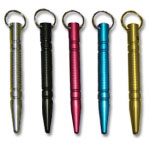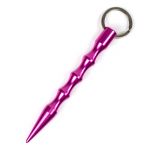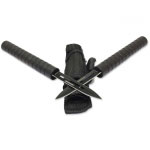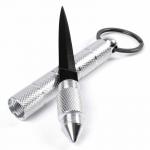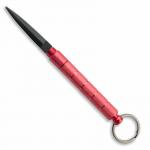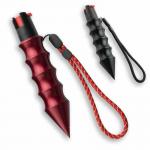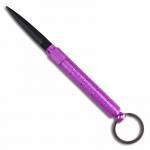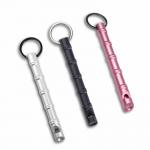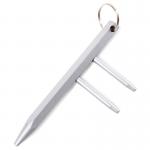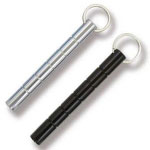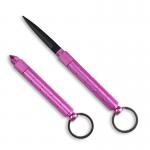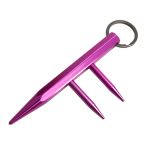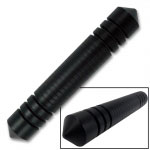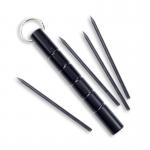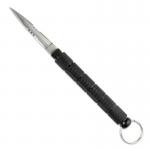Self-Defense Kubotan Keychains
-
$11.95
-
$11.95
-
$11.95
-
$11.95
-
$11.95
-
$11.95
-
$10.95
A kubotan is typically a short, cylindrical stick around five to six inches long. It's usually made of aluminum, hard plastic, or steel. Some have pointed tips while others are blunt. The most common way to carry it is as a kubotan keychain, clipped directly onto your keys. It looks harmless to the average person, but in trained hands, it can be used to strike, control, or apply pressure to sensitive areas of the body. This is why kubotan keychains are still widely used in self defense training today.
The design of a kubotan is based on older weapons like the yawara stick, which was used in traditional Japanese martial arts to strike and control opponents without causing permanent injury. A kubotan stick can be used for similar techniques. Martial artists and self defense instructors often teach how to use it for pressure point attacks, joint locks, and strikes to vulnerable targets like the ribs, collarbone, or wrists.
What makes a self defense kubotan so effective is how it multiplies force. A jab with the end of a kubaton keychain can cause intense pain even with very little effort. If someone grabs you, you can drive the stick into their hand or wrist and break their grip immediately. It also works well for trapping and manipulating joints. These are simple, effective movements that anyone can learn. No advanced training is required to use one effectively.
Because they are small and lightweight, kubotans are often carried by people who want personal protection without the legal complications of more aggressive weapons. Unlike knives or pepper spray, a kubotan keychain is legal to carry in most areas. It doesn't have sharp edges or moving parts, and it blends into everyday items without drawing attention. This is why so many people use a self defense keychain as part of their daily carry setup.
There are also many variations in design. Some kubotan keychains are smooth and round, while others have ridges or pointed tips for more control or impact. There are also kubotan keychains that double as glass breakers, pens, or flashlights, giving them additional practical use without compromising their defensive ability. This makes them one of the more adaptable self defense weapons available.
In recent years, kubotans have started showing up in more public self defense discussions. Some instructors include them in seminars for situational awareness, and there have been news stories where people have used them to defend against muggings and assaults. A well-timed strike with a kubaton has stopped attacks, helped people break free from grips, and given victims a chance to escape dangerous encounters.
Unlike many other self defense weapons, kubotans do not rely on strength or speed. Their main advantage is leverage and pain compliance. When used correctly, even a small person can use one to control or disable a much larger attacker. This is why kubotan training is often included in martial arts systems like Aikido, Karate, Krav Maga, and Jiu-Jitsu.
Whether you're looking for a self defense spike, a kubotan keychain, or a discreet tactical keychain for everyday carry, kubotans offer a simple and effective solution. They are quiet, compact, and easy to learn. Many people choose them as their first self defense weapon because they require no batteries, no maintenance, and very little training to use with confidence.
Kubotans are not flashy. They are not meant to intimidate or show off. They are practical tools designed for function. If you're carrying a self defense keychain like this, you're relying on a proven method of protection that has been used for decades in real-world scenarios.
Is it spelled Kubotan or Kubaton?
Both spellings are used, but "Kubotan" is technically correct. It comes from the name of the inventor, Takayuki Kubota. "Kubaton" is a common misspelling, but in everyday use, they refer to the same keychain weapon.
Are kubotans legal to carry?
In most parts of the United States, kubotans are legal to carry. However, laws can vary by state or even by city. Some places may classify them as prohibited weapons depending on the material or whether the end is pointed. Always check your local laws before carrying one in public or through airports.
Do you need martial arts training to use a kubotan?
No, you don't need formal training to use a kubotan effectively. Basic techniques like striking, poking, or applying pressure can be learned quickly. That said, some self defense classes or martial arts schools offer specific kubotan instruction, which can definitely help you get the most out of it.
Can I take a kubotan through airport security?
No. Even though kubotans don't have blades or electronics, TSA considers them potential weapons and won't allow them in carry-on luggage. If you're flying, it's best to pack it in checked baggage or leave it at home.
What is a kubotan used for in self defense?
A kubotan can be used for striking pressure points, breaking free from grabs, reinforcing punches, or applying joint locks. It adds force to your movements and helps control or deter an attacker, especially in close-quarters situations.
What's the difference between a kubotan and a tactical pen?
Both are small tools designed for self defense and everyday carry, but a tactical pen typically functions as an actual pen and often includes features like glass breakers. A kubotan is more focused on impact and pressure-point techniques, and usually doesn't write. Some models do cross over, though.
Can a kubotan break glass in an emergency?
Some kubotan keychains have pointed tips strong enough to break tempered glass, like in a car window. While not all are designed for that purpose, models labeled as "glass breaker kubotans" are made specifically to handle that kind of emergency use.
RECENTLY VIEWED





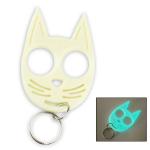




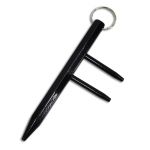
 (3)
(3)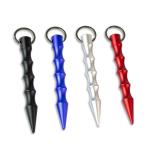
 (4)
(4)